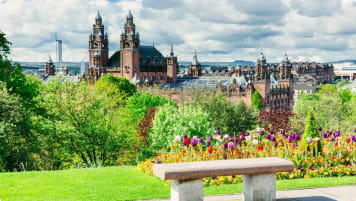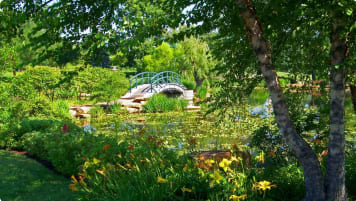Capability Brown: The English Garden Genius
Article for senior couples and mature solo travellers interested in gardens and design in England and Europe with small group tours of interest.. Brown is regarded as a genius.
6 Sep 21 · 8 mins read
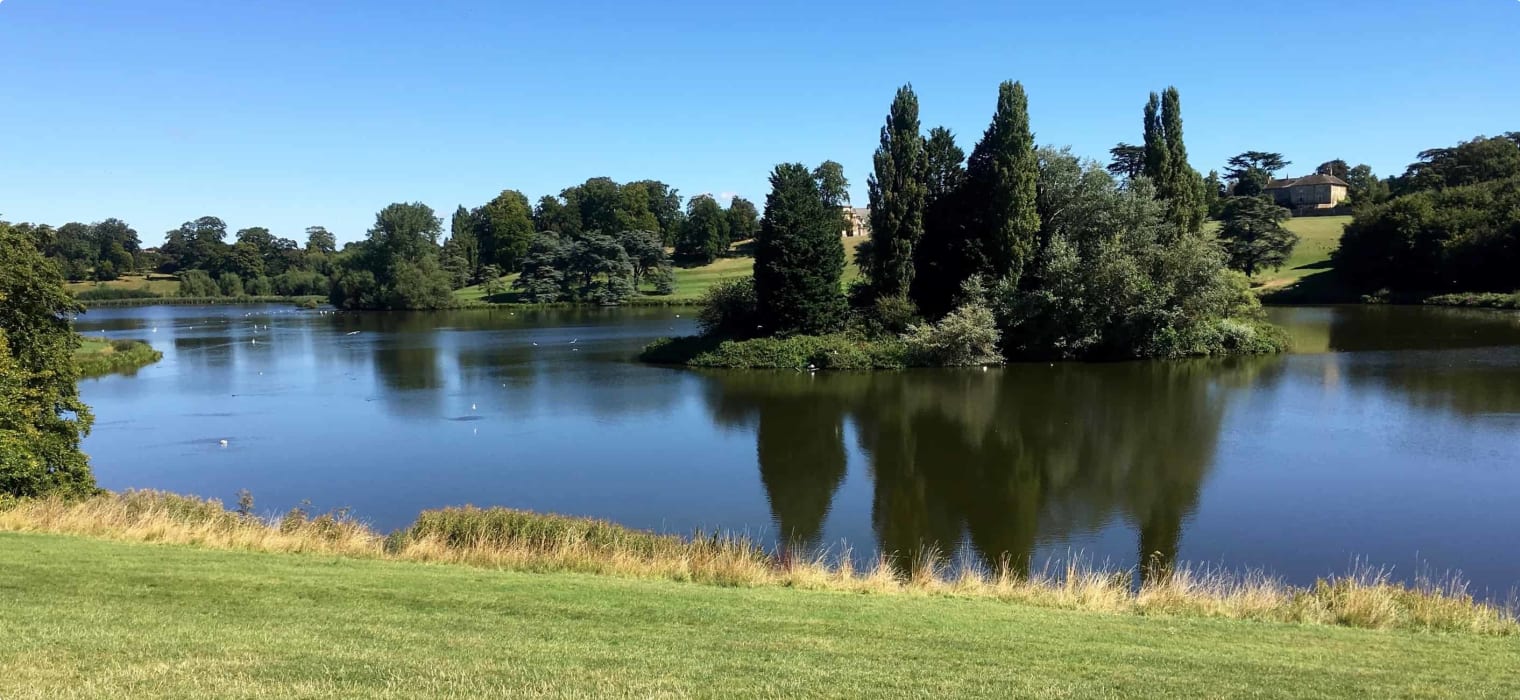
The Shakespeare of Garden Design
Over three hundred years ago, in 1716, Lancelot Brown was born in Kirkharle, Northumberland. Today, Capability Brown, as he is known, is recognised as England’s most famous landscape designer and his legacy as a pioneer of English gardening remains unparalleled. It is often said that what Capability Brown did for landscapes, Shakespeare did for English: transformed it into works of art. In this article we will discover the story of Capability Brown, the style of his landscapes and the mark they have left on modern England. We will also touch on some of Brown’s most famous clients and where you can admire his work today.
This article is based on Laura Mayer’s Capability Brown and the English Landscape Garden (Shire Publications 2014) and other resources linked throughout the piece.
This is written as a backgrounder for our educational small group tours. Our Gardens of Britain tour has been especially designed for senior travellers interested in garden design and horticulture. Commencing in Edinburgh, the tour travels through Scotland and England, visiting some of the countries’ most beautiful gardens. Many of the sites visited are today under the stewardship of the National Trust and have received worldwide acclaim. This tour offers the opportunity to learn more not only about Capability Brown but Humphry Repton and Gertrude Jekyll as well. By the end of the tour, you will be endowed with a deeper understanding of three centuries of garden design in Britain as well as a greater appreciation for the art of creating gardens. Whether you have a green thumb or not, you are sure to see the magic of gardens on this tour.
Who was Capability Brown?
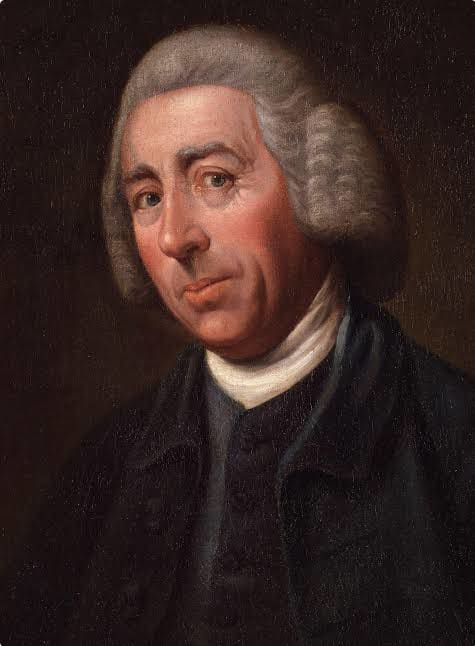
Lancelot ‘Capability’ Brown was something of a celebrity landscape designer whose work is considered quintessentially English. In his life he would work at over 250 sites with clients that included monarchs and prime ministers. Though he would make his way through the ranks of Georgian society, he had humble beginnings. His father was a farm labourer and Brown began his now famed career as a local gardener’s boy. He learnt his gardening skills working in the vegetable garden but soon his skill and talent became undeniable. He had an uncanny ability to transform the landscape around him and favoured a more ‘natural’ style of garden. In his words, he was determined to “root out the unnatural bad taste of the old style”. He was nicknamed ‘Capability’ because of his habit of telling his numerous clients that their estates had great ‘capability’ for improving the landscape.
The Landscape Garden
Brown is associated with the English landscape garden, though he was not the founder of this form of landscape. It is a simple and restrained garden style whose popularity endures today. The characteristics of a landscape garden include:
- Curved and meandering lines, rather than straight, formal ones
- ‘Informal’ vistas with focal point in the form of ruins, arches and benches
- Expansive, open parkland
- Stretches of green lawn
- Clusters of trees and shrubs of different heights, shapes and colours
The Old Style: Tudor Gardens
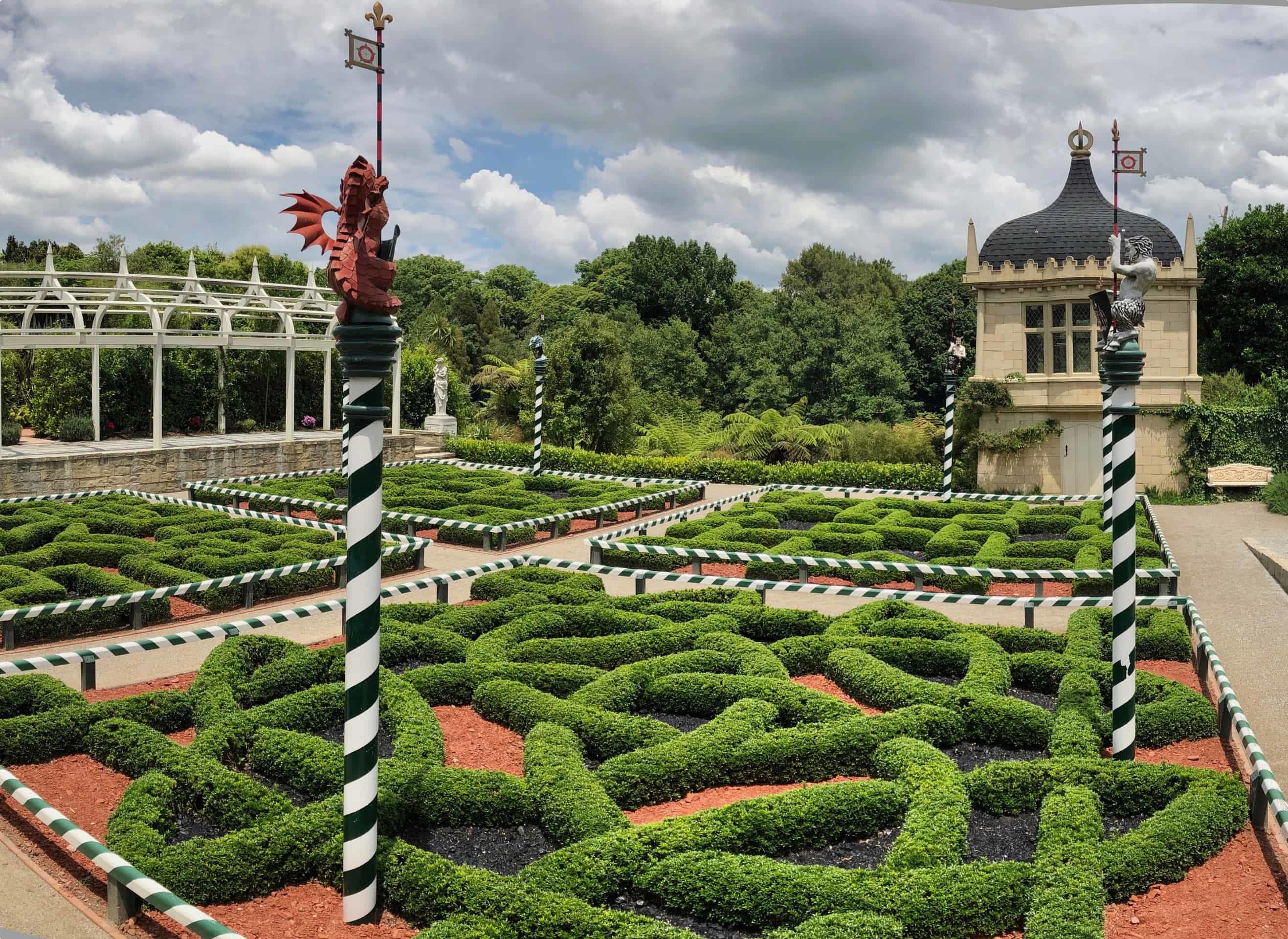
Before Brown’s innovations, gardens in England were inspired by the French formal gardens and the Italian Renaissance. Characterised by their axial formalism, these gardens focused on symmetry and the arrangement of flowers. The idea was that the garden would mirror the alignment of the house, creating a sort of architectural harmony. The emphasis on geometric shapes meant that trees were planted in straight lines, hedges were used to divide space and that gardens became an assortment of patches of green separated by symmetrical paths and walls. Statues and sundials became popular garden ornaments.
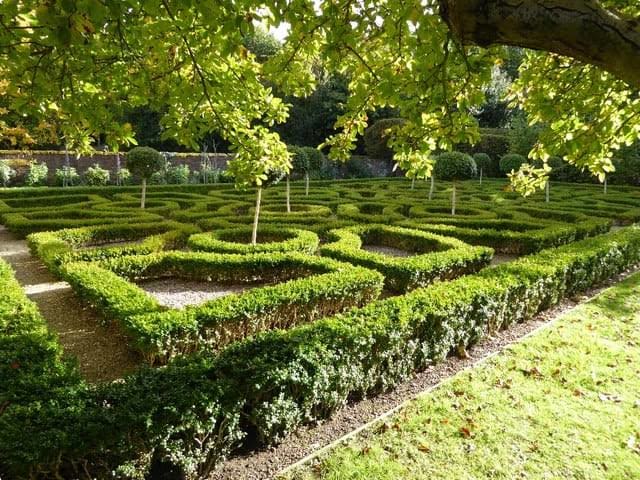
During this time, the Knot garden was particular popular design in England. Knots gardens were usually of a square design that contained intricate patterns of boxed lawn hedges and aromatic plants. The name is as such because of the pattern of the plants often resembled knotted rope.
Essentially, gardens in this time were heavily stylised and inward-looking, featuring ‘fastidious topiary’ and ‘straight canals’ (p. 9). From the mid-17th century however, there began to be a seed of a desire for a change. In 1667, the English poet and intellectual John Milton wrote the epic poem Paradise Lost in which he praises the beauty of the Garden of Eden. He says Eden is a ‘happy rural seat of various views’, setting the scene by saying:
‘Flow’rs worthy of Paradise, which not nice art
In beds and curious knots, but Nature boon.’
This gives a sense of how people had begun to anticipate the end of this era of gardens and a yearning for a more natural and open form of garden design.
William Kent and Brown’s Big Break
When Brown was 23, he moved to Wotton, owned by Sir Richard Grenville. From here, he made his way to Stowe in Buckinghamshire owned by Lord Cobham. Stowe was recognised as being an estate that experimented with different types of gardening styles and it was here that Brown worked under William Kent who was making a name for himself remodelling geometric gardens and softening their rigid formalism. Kent introduced the idea of having pathways that winded through green spaces, rather than tracks that divided gardens bluntly and harshly. He commented once that ‘all gardening is landscape painting’ having begun his career as an artist.
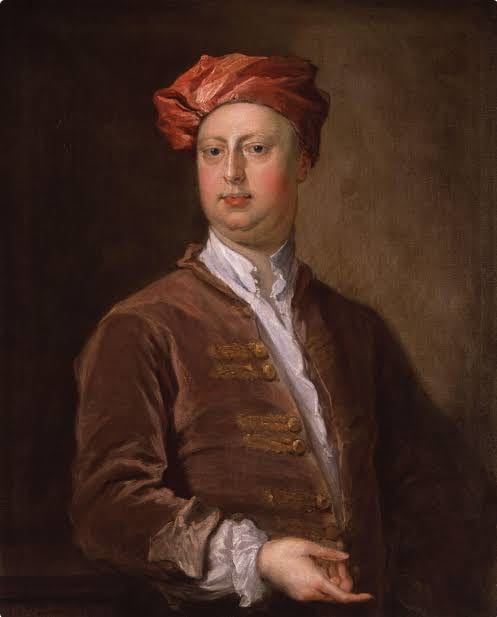
Kent, rather than Brown, is considered to have invented the first iteration of the landscape garden and MP Horace Walpole described how Kent ‘leaped the fence, and saw that all nature was a garden’. However, it was Brown who took this idea to new heights. Kent’s gardens, like that at Stowe, still embodied an element of grandeur and formality, incorporating statues and temples. Brown’s gardens, however, blurred the lines between art and nature and created landscapes that privileged the beauty of the English countryside as it was.
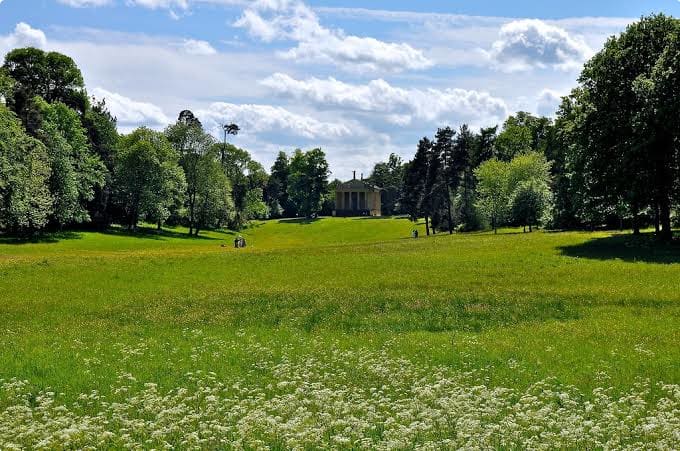
Nevertheless the two men became firm friends due to the shared belief that ‘nature abhors straight lines’. In 1742, at just 26, Brown became the head gardener at Stowe and helped Lord Cobham to expand his home and re-energise his great estate. This was Brown’s first commission, though he had help from Kent, and he replaced the garden’s parterres with a smooth, expansive lawn and added in a romantic Grecian Valley. The magnificent Grecian Valley became an iconic feature of Cobham’s splendid garden, which would become renowned for its rolling lawns, wildflower meadows and clusters of trees. It was here that Brown’s unique abilities really became evident and he remained at Stowe for ten years, marrying Bridget Wayet and starting a family.
With access to Lord Cobham’s extensive and impressive network of friends, Brown soon became sought after by aristocrats and the like who were eager to have their gardens transformed in the way Cobham’s had been. As a result, Lord Cobham would ‘loan’ Brown out on other work. When Brown and Kent both died in 1749, Brown left Stowe and began to set out on his own as a ‘garden consultant’.
Brown the ‘Improver of Grounds’
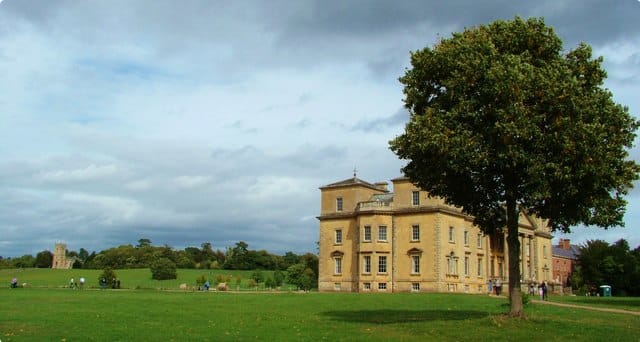
Thanks to Brown’s skill and Cobham’s address book, by 1750 Brown had secured several lucrative commissions including at Croome d’Abiot in Worcestershire and Warwick Castle in Warwickshire. At Croome Court, Brown drained the marshy ground and channelled the water to create a beautiful lake. With Brown’s help, the lost and overgrown parkland around the Court was brought to life and restored. For Brown, Croome became his ‘first and favourite child’ in terms of garden design and he would continue to work on it periodically for the rest of his life.
For the next thirty years, Brown was commissioned by various Earls and Dukes to work on their estates, redesigning the parks at Bowood House, Blenheim Palace, Sherborne Castle, Chatsworth and Highclere Castle. At each site, Brown remodelled the grounds, damming rivers to create expansive lakes. He reworked turf and strategically planted to trees to create the illusion of the idyllic pastoral vista. In this time, around 270 landscapes have been attributed to him.
In 1764, Brown became Royal Gardener to King George III and was housed with his family at Hampton Court Palace. However, he still continued his work with other clients and was extremely well-paid for his work. It is said that between 1761 and 1783 he held contracts valued around £320,000 – which translates to approximately £718 million in today’s money.
Brown died in 1783 but his work and innovative spirit did not die with him. Many other landscape gardeners continued to emulate his style and the integrity of his work is still clear today when visiting the sites that he transformed.
Where to see Brown’s work
Blenheim Palace, Oxfordshire
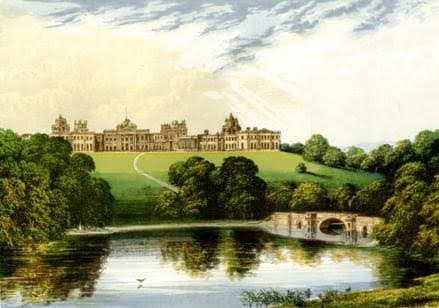
With over 2,000 acres of landscaped parkland, Blenheim Palace is one of Brown’s ultimate masterpieces. The Palace is a UNESCO World Heritage Site and the formal gardens, which include a secret garden and a magnificent rose garden, are award-winning. However, Brown’s skill is best articulated in the grand cascade, serpentine lake and spectacular vistas.
Berrington Hall, Herefordshire
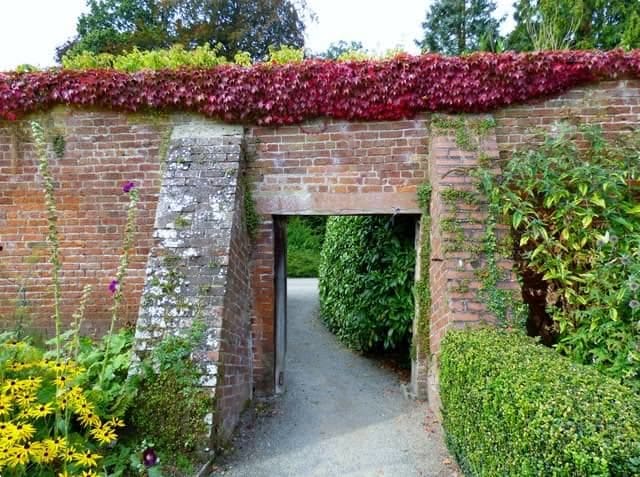
This was Brown’s final assignment and he modernised and improved the existing landscape. The gardens feature a 14-acre lake, panoramic views of wooded parkland and attractive belts of oak and beech trees. Brown also designed an unusual walled garden north of the main house.
Harewood House, Yorkshire
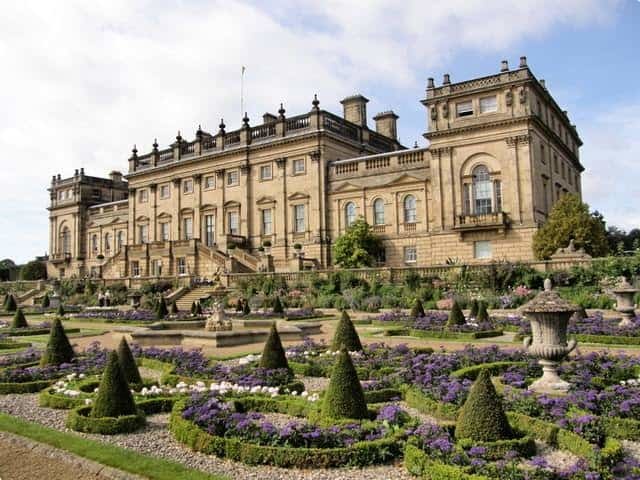
At Harewood House in Yorkshire, Brown wanted to the gardens to be as majestic and formidable as the house itself. To do this, he constructed an enormous lake (around 32-acres). Today you can take tours of the lake and admire the 1,000 acre park as well as the impressive bird garden.
Trentham, Staffordshire
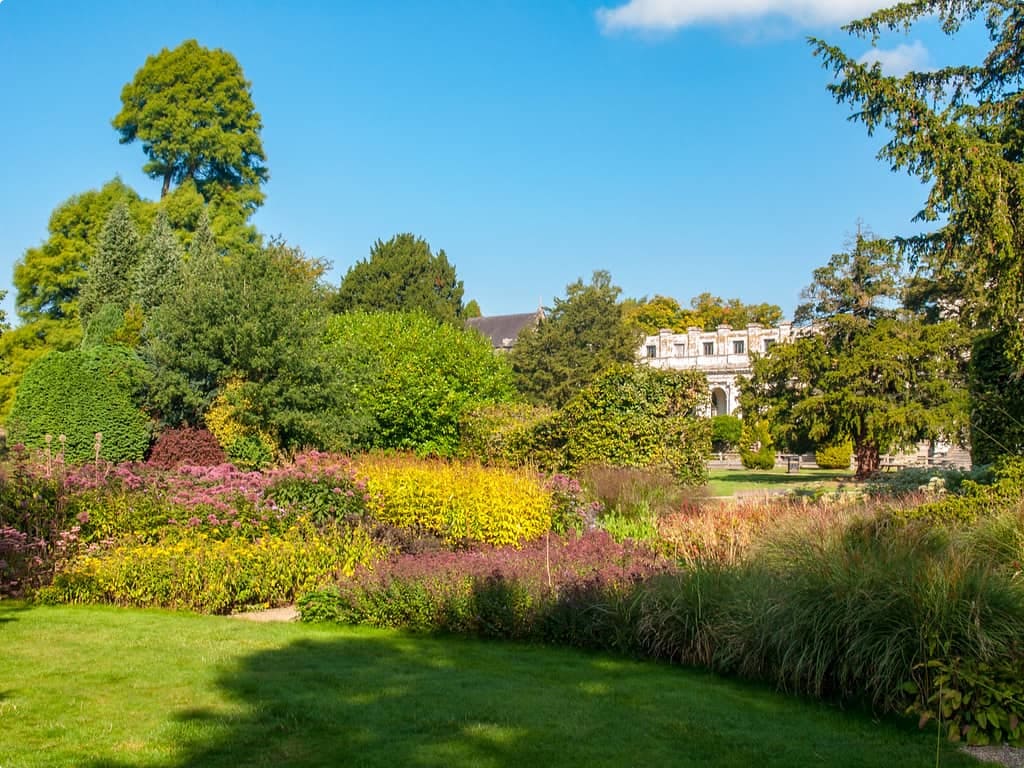
One of Brown’s most celebrated gardens, Trentham features a Brown-designed lake and pleasure grounds. Brown removed a number of avenues and restored the site to have more natural-looking parkland. Today, there are plenty of country walks around the estate from where you can admire the breathtaking scenery and the splendour of Brown’s work.
Brown’s Legacy
No one quite influenced the English landscape and understandings of what makes a beautiful garden like Capability Brown. Brown created a definitively English style, distinct from the French and Italian gardens that had once been imitated throughout the country. Gardens have become a cemented part of England’s identity and no matter where you travel in the country, if you visit any of the number of castles and palaces, you are likely to feel the influence of Brown. Richard Wheeler, a National Trust garden historian, describes how,
‘Brown gives us nature in a form more beautiful than she could ever be by herself’.
Brown once compared his work to that of a literary editor. In 1782, he is quoted as saying
‘Now there I make a comma, and there, where a more decided turn is proper, I make a colon; at another part, where an interruption is desirable to break the view, a parenthesis; now a full stop, and then I begin another subject’.
Odyssey Traveller’s tours give you the opportunity to admire the UK’s natural landscapes and explore some of the amazing public gardens on offer, while discovering more about Capability Brown and the indelible mark he has left on garden design. If this has piqued your interest in gardens, please take a look at the different tours we have based around gardens. Don’t forget that we also have a number of tours of England that you may join!
Related Tours
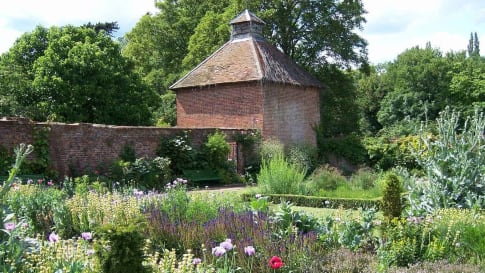
16 days
JunBritish Gardens Small Group Tour including Chatsworth RHS show
Visiting England, Scotland
From A$16,895 AUD
View Tour
7 days
AprDutch Tulips | Netherlands Small Group Tours
Visiting The Netherlands
Our small group guided tour in the Netherlands provides us with a delicious taste of its delights. We view the main sights of old Amsterdam, a World Heritage Site, first on foot and then from the comfort of a cruise along its 17th century canals. Our exploration of Dutch gardens includes the Hortus Botanicus, an impressive university garden. Timed to enjoy what is perhaps the highlight of the program - a visit to Keukenhof’s bulb gardens. They contain more than 7 million tulips, daffodils and hyacinths which fill over 32 hectares.
From A$6,525 AUD
View Tour
26 days
AprWestern Europe Chateaux and Gardens | Small Group Tour for Seniors
Visiting Belgium, France
This small group escorted educational tour combines visits to France, Belgium, Luxemborg, the Netherlands, and Germany. During the 26 days, we will discover a selection of the finest gardens and chateaux in Europe. Our destinations also include several UNESCO World Heritage Sites, for example the royal palaces built by the Prince-Bishop of Cologne in Brühl, Germany.
From A$15,745 AUD
View Tour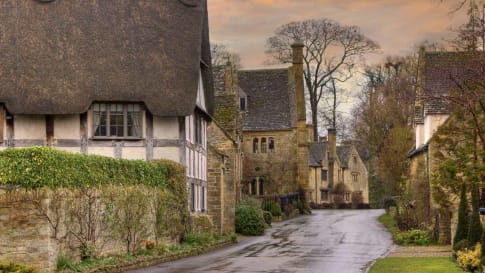
19 days
Jun, SepEngland’s villages small group history tours for mature travellers
Visiting England
Guided tour of the villages of England. The tour leader manages local guides to share their knowledge to give an authentic experience across England. This trip includes the UNESCO World heritage site of Avebury as well as villages in Cornwall, Devon, Dartmoor the border of Wales and the Cotswolds.
From A$16,995 AUD
View Tour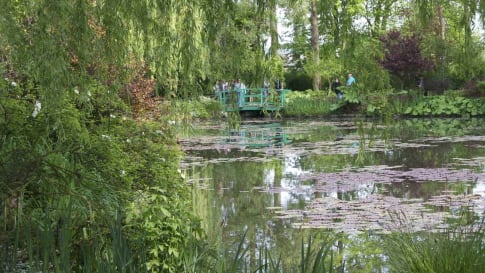
25 days
Aug, May, SepItaly and France, history of gardens small group escorted tour
Visiting France, Italy
Odyssey's small group tour explores some of the classic gardens of Italy and France that reflect changing fashions and garden designs throughout the ages. This fully escorted tour features an Odyssey Program Leader and a handful of local guides who will examine, discuss, compare and contrast the cultural and temporal similarities and diversities between the gardens of Italy and France and the historical influences on their design.
From A$17,595 AUD
View TourRelated Articles
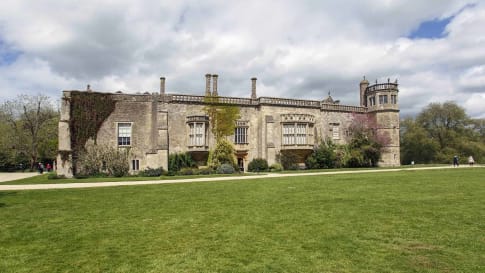
Britain’s National Trust role for successful small group history tours
Britain’s National Trust: Historic houses, gardens and natural wonders Britain is home to many attractions, many of them rich in the region’s history. Sites and artefacts are preserved beautifully, and kept safe from future development.…

British Village Icons: Definitive Guide for Travellers
Icons of the British Villages: Pubs and Cottages The British pub and cottage figure prominently in the image of a (often romanticised) quintessential “British village”. In this article, we will give special attention to these…

Challenges of Art Restoration
Articles examines some of the challenges of art restoration to be considered as a senior couple or mature solo traveler you join a small group tour of Giverny, Brunelleschi's dome in Florence, the map room in Rome or Spinalonga Crete, the challenges remain.

Dry Stone Walls: An Alternative History of the British Isles
Throughout the nation, from Yorkshire to Orkney, miles of moss-covered dry stone walls snake their way through the open land. You would be forgiven for not looking twice. However, dry stone walls offer an alternative route into the history of humanity in the British Isles.
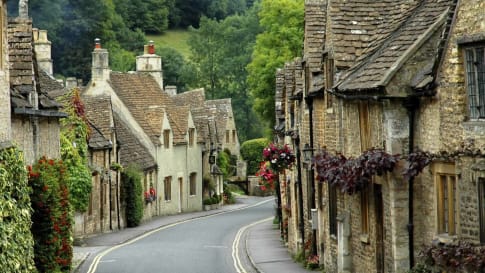
English Village History
An English Village history. Prepared for mature and senior travellers, couples or solo traveller considering joining a small group tour of England's villages.

Exploring Jane Austen’s England
Exploring Jane Austen’s England Jane Austen The reach and magnitude of Jane Austen’s influence on modern readers may make one forget that she only had six novels to her name (three of which were published…

Lumps and Bumps: How to Read the British Landscape
The British landscape has been worked and re-worked. It is secrets of this palimpsest landscape is revealed through drainage patterns and prehistoric features all the way through to the modern day. These small group tours for mature and senior travellers examine the landscape from the Neolithic, to Roman, through the seven ages of Britain in walking tours and history tours of Britain.
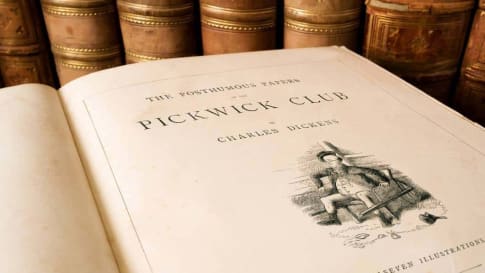
Small Group Literary Tours of England for Seniors
Explore Britain's literary heritage on small group package holidays and tours for mature and senior travellers each year from Odyssey Traveller. Small group tours for couples and solo travellers with a passion for exploring and learning.
